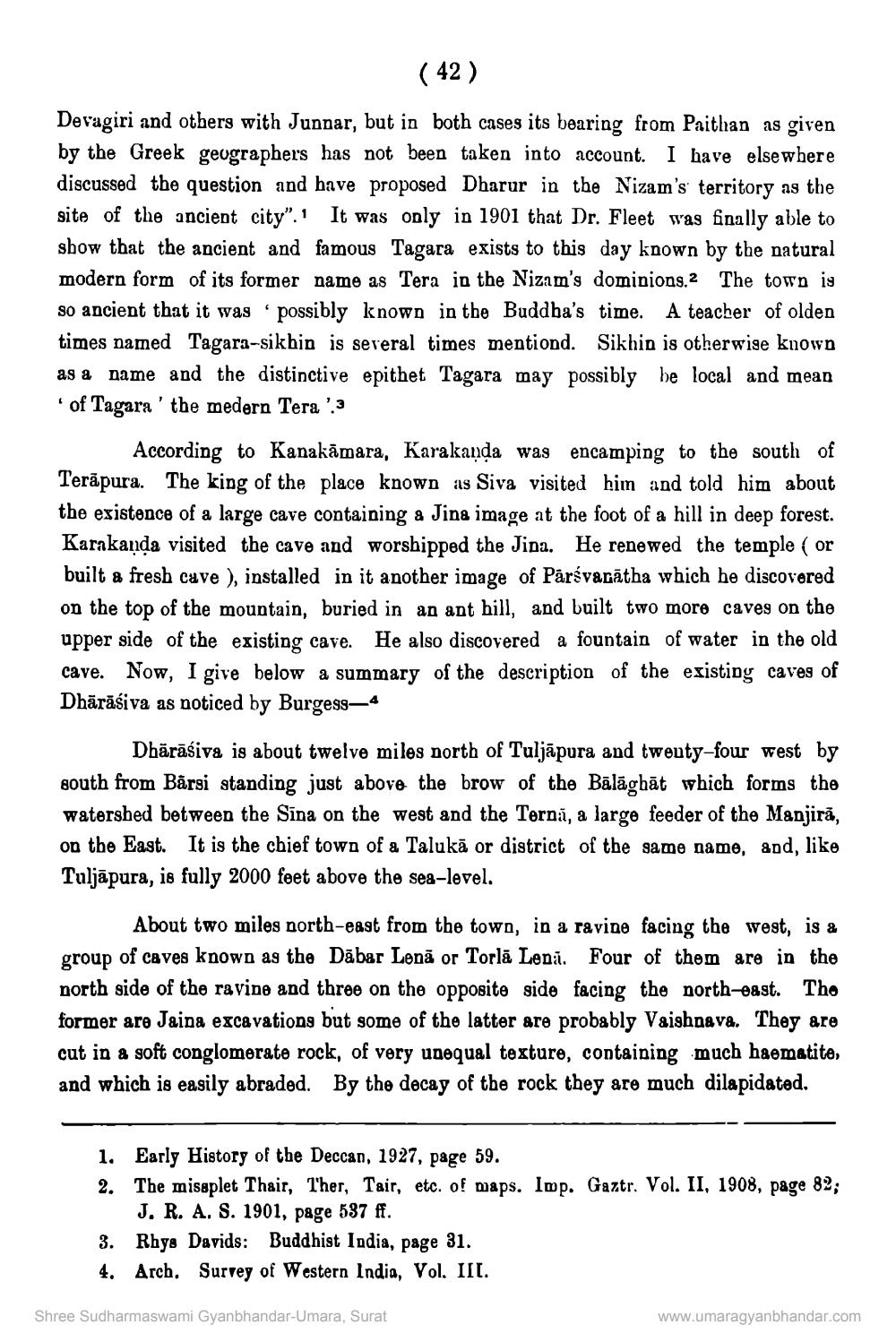________________
( 42 )
Devagiri and others with Junnar, but in both cases its bearing from Paithan as given by the Greek geographers has not been taken into account. I have elsewhere discussed the question and have proposed Dharur in the Nizam's territory as the site of the ancient city". It was only in 1901 that Dr. Fleet was finally able to show that the ancient and famous Tagara exists to this day known by the natural modern form of its former name as Tera in the Nizam's dominions.2 The town is so ancient that it was possibly known in the Buddha's time. A teacher of olden times named Tagara-sikhin is several times mentiond. Sikhin is otherwise known as a name and the distinctive epithet Tagara may possibly be local and mean of Tagara' the medern Tera '.3
According to Kanakāmara, Karakanda was encamping to the south of Terapura. The king of the place known as Siva visited him and told him about the existence of a large cave containing a Jina image at the foot of a hill in deep forest. Karakanda visited the cave and worshipped the Jina. He renewed the temple (or built a fresh cave ), installed in it another image of Parsvanatha which he discovered on the top of the mountain, buried in an ant hill, and built two more caves on the upper side of the existing cave. He also discovered a fountain of water in the old cave. Now, I give below a summary of the description of the existing caves of Dhäräsiva as noticed by Burgess-4
Dhārāśiva is about twelve miles north of Tuljapura and twenty-four west by south from Barsi standing just above the brow of the Balaghat which forms the watershed between the Sina on the west and the Ternă, a large feeder of the Manjira, on the East. It is the chief town of a Taluka or district of the same name, and, like Tuljapura, is fully 2000 feet above the sea-level.
About two miles north-east from the town, in a ravine facing the west, is a group of caves known as the Dabar Lena or Torla Lena. Four of them are in the north side of the ravine and three on the opposite side facing the north-east. The former are Jaina excavations but some of the latter are probably Vaishnava. They are cut in a soft conglomerate rock, of very unequal texture, containing much haematite, and which is easily abraded. By the decay of the rock they are much dilapidated.
1. Early History of the Deccan, 1927, page 59.
2. The missplet Thair, Ther, Tair, etc. of maps. Imp. Gaztr. Vol. II, 1908, page 82; J. R. A. S. 1901, page 537 ff.
3. Rhys Davids: Buddhist India, page 31.
4. Arch. Survey of Western India, Vol. III.
Shree Sudharmaswami Gyanbhandar-Umara, Surat
www.umaragyanbhandar.com




